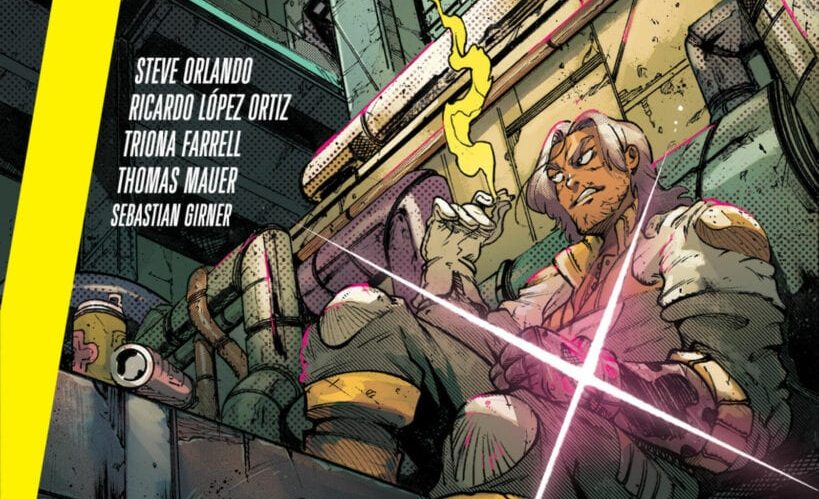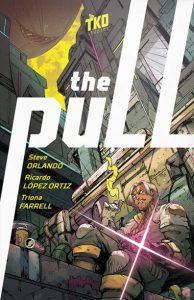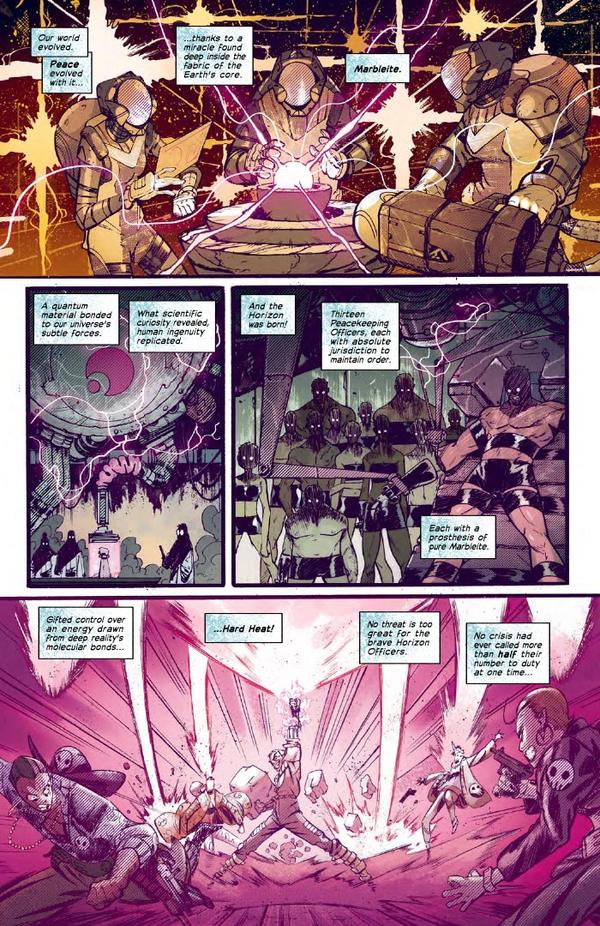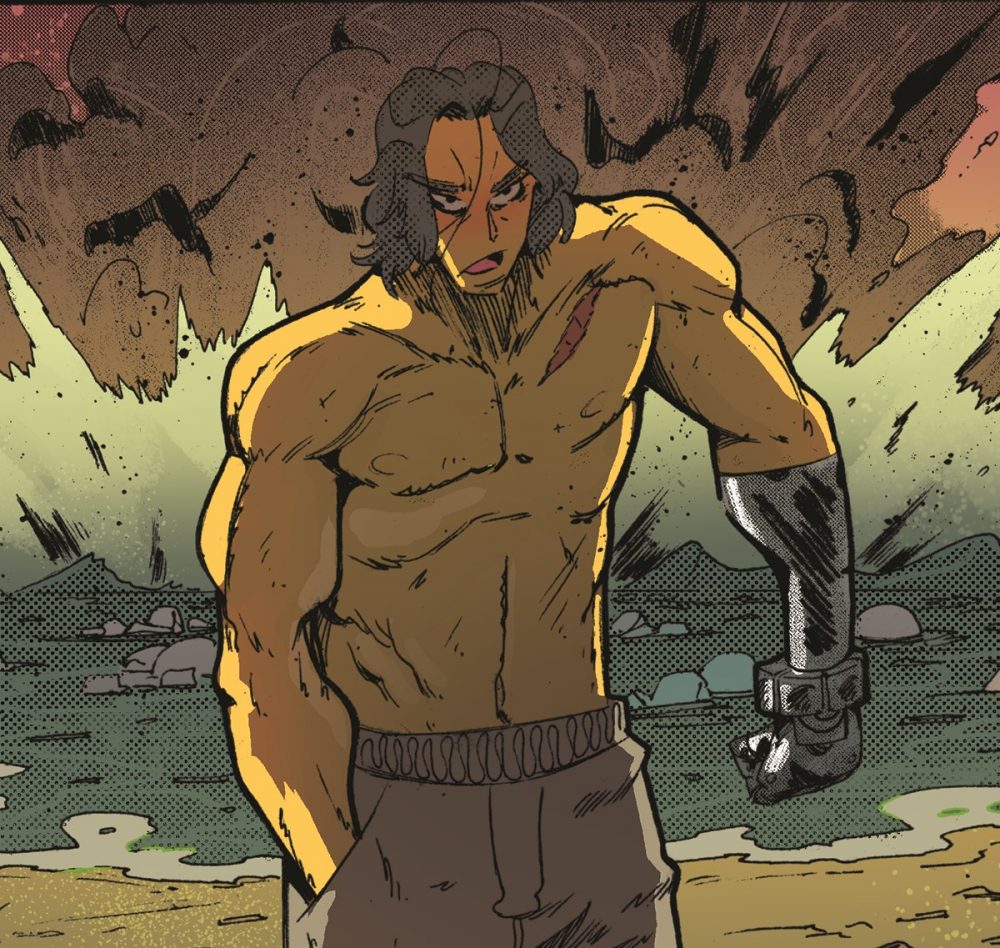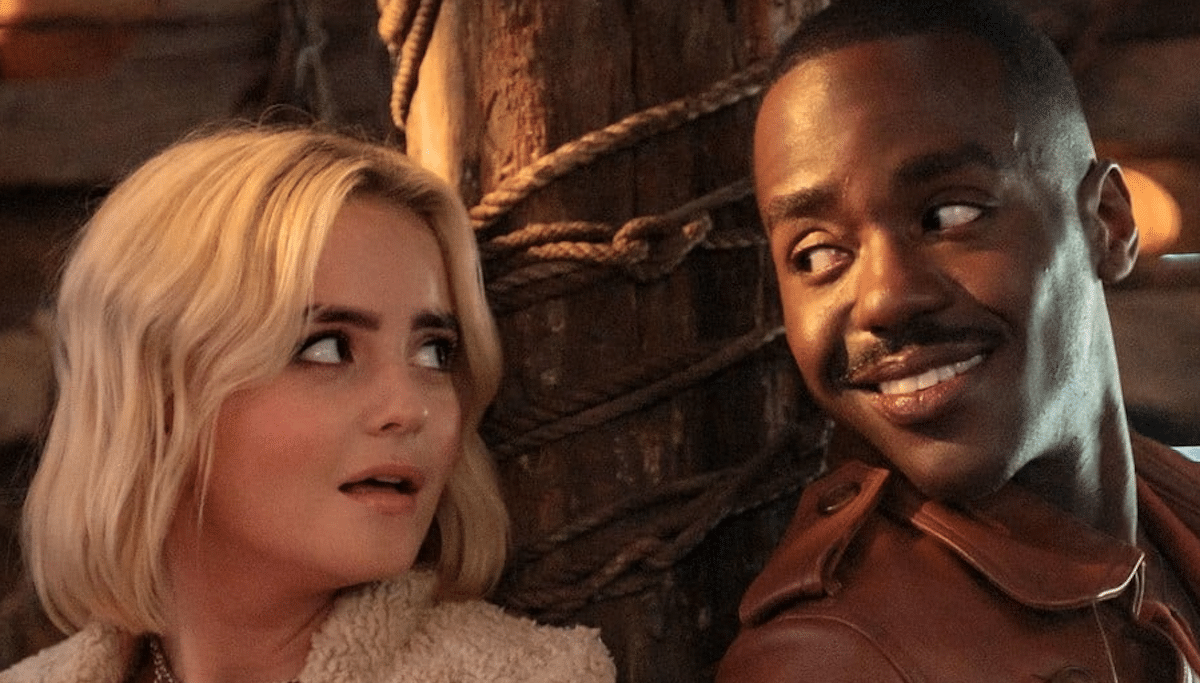The Pull
Writer: Steve Orlando
Artist: Ricardo López Ortiz
Color Artist: Triona Farrell
Letterer: Thomas Mauer
Publisher: TKO Studios
As I wrote for Weekend Reading, Steve Orlando is one of the most consistently exciting writers to emerge in the past half-decade or so. His breakthrough run on Midnighter with artist ACO is among the best superhero comics of the 2010s, and everything else he’s written is imbued with so much creativity, chutzpah, and enthusiasm that comparisons to his clearest influence, Grant Morrison, are well-earned. It’s a shame, then, that for all the passion Orlando put into The Pull with artist Ricardo López Ortiz, colorist Triona Farrell, and letterer Thomas Mauer, this graphic novel from TKO Studios doesn’t live up to the promise of its lofty ambitions.
Set sometime in the (hopefully) far-off future, this sci-fi tale follows the hot-headed Brenton Demm, one of Earth’s 13 super-powered “Horizon Agents:” think OMAC if he were a dirty cop and Jack Kirby read as much manga as López Ortiz apparently has (Demm straight-up looks like Super Saiyan Goku in one panel). Demm is remarkably unlikeable. In the opening flashback, we witness the bloodbath he inadvertently caused by trying to “play the hero,” and ever since, he’s fallen into nihilism. He falls deeper into the “corrupt cop” role, and distracts himself with drugs and sex (this is a kinkier book than you’d probably expect) in anticipation of the coming apocalypse: the titular “pull” of the unstoppable cosmic force known as The Undoer.
Demm changes his tone when his ex-lover, a genius scientist named Gaya, offers him a path to redemption. She has some dark secrets of her own, however, and with just six days until the end of the world, it’s immediately clear that nothing will be resolved as simply as a climactic action sequence.
Perhaps the best thing I can say about The Pull is that it’s one of the few stories, in any medium, that takes the idea of the End of the World seriously. Even now, as humanity is presented with bona fide existential threats including environmental collapse and an incompetently-addressed pandemic, most genre fiction treats the apocalypse as a mere trope: a vague overarching threat to our protagonists, but thematically and in terms of narrative structure, mostly just a means to an (in the vast majority of cases, happy) end. Not so with The Pull, as Orlando and López Ortiz frequently pause from the bombastic violence to linger on the overwhelming despair of people who are increasingly certain that it’s Too Late.
It’s too bad more of The Pull didn’t focus on such emotional truths, because as Orlando’s world-building progresses, it increasingly feels as if he bit off more than he could chew in just six issues (one for each day until The Undoer’s arrival). There’s a lot to think about here— the way younger generations are left to clean up the mess of the previous generation, the dangers of a militarized police force, the failure to heed science’s most dire warnings (comparisons to Jor-El before the destruction of Krypton are warranted)—and it’s all great sci-fi fodder, but rarely do Orlando’s bold ideas have enough room to breathe.
It doesn’t help that so much time is spent exploring the idea of “hard heat,” the fictional resource that gives Demm his powers as well as the cause of the coming apocalypse. It’s a fun idea, but it’s not as interesting as the more urgent philosophical questions, and at a certain point the detailed explanations of fake science are frustratingly video-gamey.
With such relentless ambition, it’s all the more impressive that line artist Ricardo López Ortiz matches the zippy energy of Orlando’s writing. With dynamic figures and a fantastic sense of pacing in his layouts, López Ortiz’s art is about as “loud” as a comic can be without crossing the line into confusing readers. It’s slightly disappointing that this isn’t a more humorous book, as his comedic sensibilities with writer Daniel Kibblesmith elevated Black Panther vs Deadpool from being a mere Marvel cash-in, but hopefully this opportunity to show off his dramatic abilities go a long way towards making him the rising star that he deserves to be.
Of course, another reason The Pull reads as such a “loud” comic is because letterer Thomas Mauer designed it as such. While there’s nothing about the ordinary captions and word balloons that necessarily stand out (which is fine, as Mauer keeps the comic “readable”), the design of the sound effects here is cleverer than your average sci-fi romp.
A great deal of credit must go to colorist Triona Farrell for making The Pull visually distinctive. Under a lesser colorist, the obvious palette choice for such a dark, apocalyptic story would be earthy browns and grays, which is what we usually see from stories of this ilk. Somehow, Farrell has peppered this story with purples and pinks without ever betraying the severity of the story being told. After all, for all of The Pull’s focus on a dying planet, this is still a story of an absolutely jacked dude with wild hair and a magic arm trying to save humanity.
Make no mistake, this is a fascinating comic, made by enthusiastic creators who know how to keep you reading. While The Pull ultimately proves too ambitious for its own good, it’s the kind of noble failure that can still be recommended to adventurous sci-fi fans looking for big ideas and eye-popping visuals.
The Pull is available from TKO Studios now.


